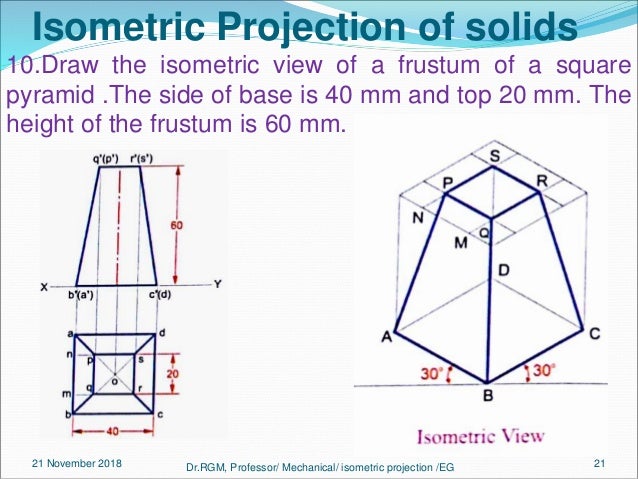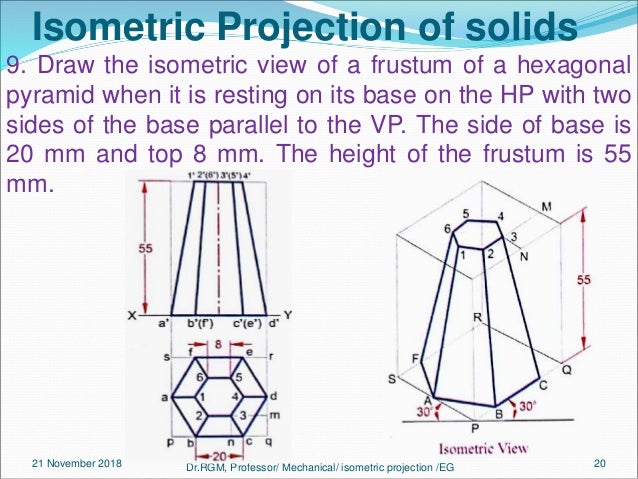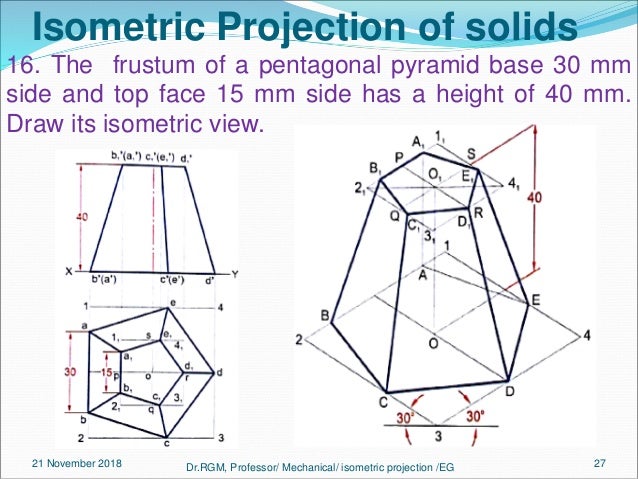Isometric Projection 3
Isometric Projection - 3
Dear Students,
We have learnt some basic concepts of Isometric Projection in the last two classes and solved some problems pertaining to planar figures. Now we shall learn to make isometric projection of frustums.
A few examples of frustums
Figure 1: Frustum of a Square Pyramid

Figure 2: Frustum of a Hexagonal Pyramid
1. What is a frustum?
A frustum is a truncated part of a cone or a pyramid. In other words the portion of a cone or a pyramid which remains after the upper part has been cut off by a sectioning plane parallel to its base. Refer figures 1 and 2 above.
2. How to draw the isometric projection of a frustum?
We follow few basic steps as enlisted below:
a). Draw a helping figure: You will draw both the face and the base of a frustum of a pyramid i.e. a small and a big triangle, square, pentagon or a hexagon. Enclose the figure within a box. Mention the title 'HELPING FIGURE' within two parallel lines 6 mm apart.
b). Draw 30-30 axis: Here you must draw the box of the base of the frustum. Draw the tiangle/square, pentagon, hexagon inside the box. Mark its centre and then raise the centre equal to the height of the frustum (isometric length).
c). Draw 30-30 cross: Here you draw the box of the top face of the frustum using the half- half concept as learnt in class 11.
d). Join the visible edges (between the top face and the base) of the frustum
e). Mention titles, dimensions, indicate the direction of viewing.
Exercise - 3 : Isometric Projection of Frustums
Instructions:
a. Show direction of viewing, mark its centre and mention dimensions in all the questions.
b. Solve these questions in your drawing file
c. Please take a picture of your answers and post them in the EG Group.
Q 1

Q 2

Q 3

Good morning Students. Hope all are logged in for the class.
ReplyDeleteSending answers to the three questions mentioned in the exercise - 3 is mandatory.
Read the theory part in the tutorial in about 15 minutes and then start attempting the exercise questions.
ReplyDeletePlease feel free to ask any queries or doubts
ReplyDeleteSir, it is mentioned in the question that we have to draw the isometric view. Does that mean we have to draw all dimensions with the true length?
ReplyDeleteYou may draw either of these. But it is advisable to draw the projection using isometric scale.
ReplyDeleteSir, dimensions for the second question is too small
ReplyDeleteCan't draw it well.
You may take convenient dimension such as 30 and 20 instead of 20 and 8.
ReplyDelete